Physics
Sign up for our newsletter
We summarize the week's scientific breakthroughs every Thursday.
-
 Humans
HumansMoon bounces, bad spider leaders and more reader feedback
Readers debate faith's role in evolution, compare politicians to spiders and more.
-
 Physics
Physics3-D printed device cracks cocktail party problem
A plastic disk does what sophisticated computers cannot: solve the cocktail party problem.
By Andrew Grant -
 Quantum Physics
Quantum PhysicsPhysicists get answers from computer that didn’t run
By exploiting the quirks of quantum mechanics, physicists consistently determined what a quantum computer would have done without actually running the computer.
By Andrew Grant -
 Physics
PhysicsQuest for room-temperature superconductivity warms up
Scientists have demonstrated that a material can conduct electrical current without resistance at temperatures as high as –70° Celsius.
By Andrew Grant -
 Chemistry
ChemistryThree kids’ science books offer fun, fascinating experiments
No matter what interests kids, there’s a do-it-yourself science book for them. Here are three with entertaining and educational options.
-
 Particle Physics
Particle PhysicsAntimatter doesn’t differ from charge-mass expectations
An experiment with unprecedented precision finds that protons and antiprotons have the same ratio of charge to mass, which is consistent with theories but disappoints many physicists.
By Andrew Grant -
 Physics
Physics3-D printed device cracks cocktail party problem
A plastic disk does what sophisticated computers cannot: solve the cocktail party problem.
By Andrew Grant -
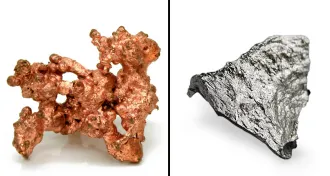 Materials Science
Materials ScienceBuckyballs turn on copper’s magnetism
Exposure to buckyballs bestows ironlike magnetic properties onto the normally nonmagnetic metals copper and manganese.
By Andrew Grant -
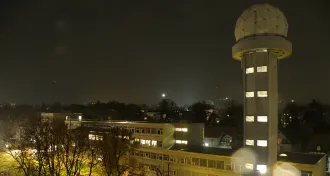 Quantum Physics
Quantum PhysicsQuantum communication takes a new twist
A three-kilometer transmission of light above the Vienna skyline demonstrates that scientists can use the twistiness of light to encode delicate quantum information.
By Andrew Grant -
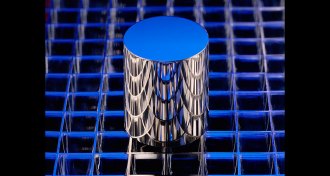 Physics
PhysicsRevamping the metric measure of mass
The units of the metric system are on track for a 2018 makeover.
-
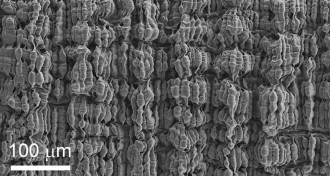 Materials Science
Materials ScienceStretchy fiber lets electrons flow
Folded layers of carbon nanotubes allow an elastic fiber to conduct electrical current when stretched.
By Andrew Grant -
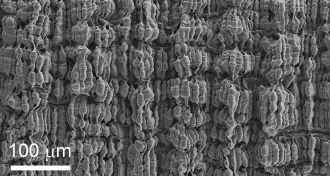 Materials Science
Materials ScienceStretchy fiber keeps electrons flowing
Folded layers of carbon nanotubes allow an elastic fiber to conduct electrical current when stretched.
By Andrew Grant